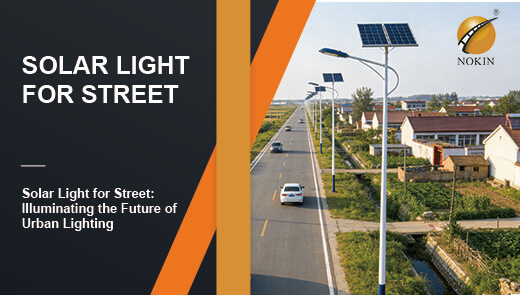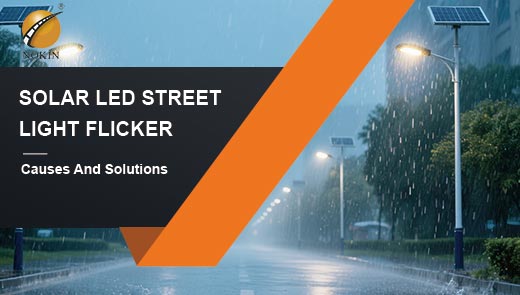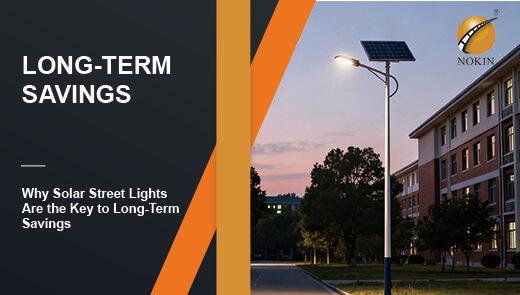A Comprehensive Analysis of Solar Street Light Pricing
As a representative of green lighting, the pricing system for solar street lights involves multiple dimensions. This article will systematically break down the factors influencing solar street light prices, type differences, and lifecycle costs, and reveal why higher initial investments still offer good value for money, providing professional guidance for procurement decisions.
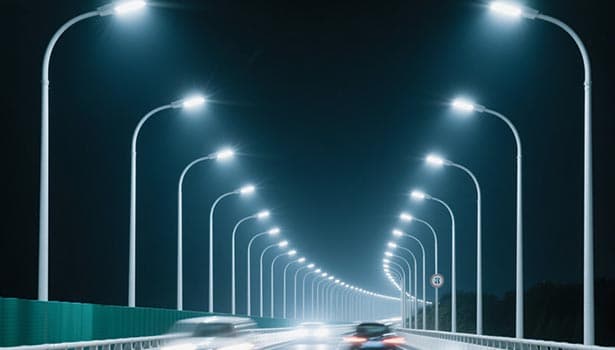
Types of Solar Street Lights and Basic Price Ranges
Integrated Solar Street Lights
Integrated solar street lights integrate solar panels, batteries, and LED lighting into a single unit, offering the significant advantage of easy installation. This design is particularly suitable for small-scale projects, courtyard lighting, or residential applications. Their price range typically falls between $100–500 per unit, making them a preferred choice for users with limited budgets. Due to the high component integration, transportation and installation costs are also reduced, making them suitable for projects with stringent construction efficiency requirements.
Split Solar Street Lights
Unlike integrated designs, split solar street lights separate the solar panels, batteries, and lighting fixtures. This structure gives them an advantage in large-scale projects, complex terrains, or scenarios requiring high customization. For example, municipal road lighting and industrial park projects often adopt this design for large-scale lighting applications. The price range is $300–1,000 per unit. While the separated components require more complex installation and wiring, leading to higher costs compared to integrated models, they also offer flexibility in adjusting power configurations and energy storage solutions.
Key Factors Influencing Solar Street Light Prices
LED Fixture Power
LED fixture power is the key variable affecting price fluctuations. Higher power results in greater brightness, with costs increasing in a stepwise manner.
Price differences stem from the need for higher-power fixtures to be equipped with higher-quality chips, heat dissipation modules, and power supplies. When selecting fixtures, it is essential to balance brightness and cost based on the specific application requirements. Municipal projects may opt for high-power models above 50 watts, while residential applications prioritize low-power models between 20 and 30 watts.
Solar Panel
Efficiency differences:
Monocrystalline solar panels have a conversion efficiency of ≥22%, costing 30%-50% more than polycrystalline panels, but their long-term power generation efficiency advantage reduces unit energy costs;
Polycrystalline panels offer better cost-effectiveness and are suitable for regions with ample sunlight.
Size Impact:
100-watt panels are significantly more expensive than 50-watt panels. In areas with ample sunlight, high-efficiency small-sized panels can be selected; in areas with insufficient sunlight, larger panel sizes are required to ensure power generation.
Battery System
Type selection:
Lead-acid batteries: low cost but short lifespan (3-5 years), requiring frequent maintenance;
Lithium-ion batteries: 2-3 times more expensive, but with a 50% longer runtime, a lifespan of 5-8 years, and minimal maintenance requirements.
Capacity differences:
100 Ah high-capacity batteries are more expensive than 50 Ah batteries but can support 3-5 days of runtime during cloudy or rainy weather, making them suitable for rainy regions; standard-capacity batteries are more suitable for areas with stable sunlight. Selection should be based on the project site's climate and lighting duration requirements.
Smart Features and Material Quality
Smart modules:
Features such as motion sensors, remote monitoring, and automatic dimming increase costs but can achieve over 30% energy savings, reducing long-term operational costs.
Material upgrades:
High-quality materials like corrosion-resistant aluminum housings and stainless steel brackets increase costs but extend the lamp's lifespan to over 10 years, resulting in lower lifecycle costs.
Light Poles and Installation Hardware
Light pole costs:
Aluminum alloy poles are more expensive than galvanized steel poles but are lighter and more corrosion-resistant, making them suitable for coastal or high-humidity regions. When selecting poles, choose appropriately based on the local natural environment.
Installation process:
Construction costs for foundation pouring and cable routing account for 30%-40% of total installation fees. In complex terrains like mountains or wetlands, construction costs may increase by an additional 20%-50%.
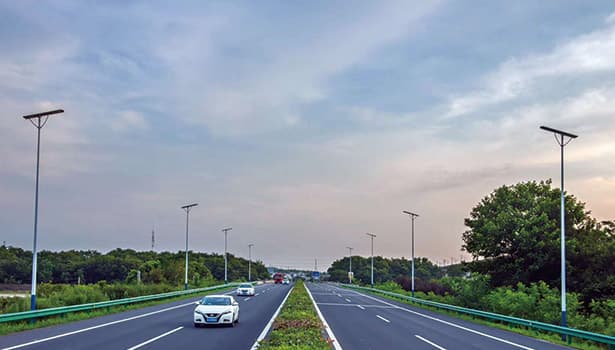
Solar Street Lights vs. Traditional Street Lights Cost Comparison
|
Dimension |
Solar Street Lights |
Traditional Street Lights |
|
Initial Investment |
High |
Low |
|
Energy Costs |
0 (solar-powered) |
High (annual electricity costs $100–$300 per lamp) |
|
Maintenance Costs |
Low (battery replacement every 5 years, annual maintenance $20–$50) |
High (annual bulb replacement and circuit inspection, $80–$150) |
|
Environmental Impact |
Zero emissions, renewable energy |
Dependent on the grid (fossil fuel-powered electricity) |
|
Suitability for Remote Areas |
Independent power supply, flexible installation |
Requires grid coverage, high construction difficulty in remote areas |
Additional Factors Influencing Solar Street Light Pricing
Composition of Installation Costs
The installation cost of solar street lights consists of labor and material expenses, with an average cost per lamp of $150-$300. If the project is located in mountainous or wetland areas with complex terrain, construction difficulty increases, and costs may rise by 50%. Additionally, professional lighting simulation and system configuration design are critical components, accounting for approximately 5–10% of the total budget. However, optimizing solar panel angles and battery ratios can ensure maximum system efficiency.
Cost Breakdown of Additional Equipment
In addition to core components, the system requires the following additional equipment:
Charge controller: Prevents overcharging or over-discharging of batteries to ensure energy storage safety, with a price range of 30–80 USD;
Inverter (if AC output is required): Converts DC power to AC power, with a cost of approximately 100–200 USD;
Backup power system: For projects with high endurance requirements, it can address continuous rainy weather conditions, with an additional cost of 200–500 USD.
Cost Adjustments Due to Scaled Procurement and Regional Factors
Project scale effects:
When purchasing solar street lights in bulk, discounts are typically available, reducing the cost per unit. Scaled construction significantly reduces installation and commissioning costs.
Regional conditions:
Regions with abundant sunlight (e.g., Africa, Southeast Asia): Battery capacity requirements can be reduced, lowering costs by 15–25%;
In rainy regions: Additional energy storage equipment (such as high-capacity batteries) is required, increasing costs by 10%-15%.
Policy subsidies and tax incentives:
Some countries offer specialized subsidies for solar projects (e.g., 30% investment tax credits). It is essential to verify local policies before procurement to optimize cost structures by leveraging such incentives.
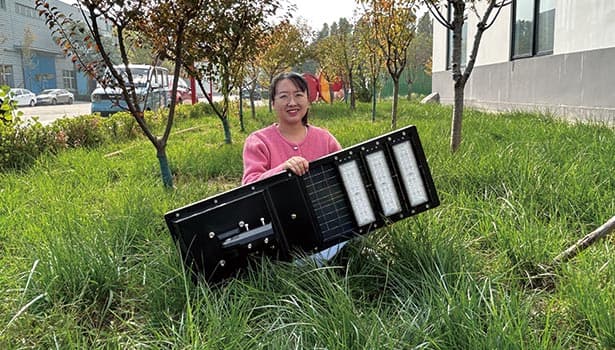
Why Invest Solar Powered Street Lights?
Economic Value
Although the initial investment in solar street lights is indeed higher than that of traditional street lights, their long-term advantages in energy and maintenance costs are very evident. The low maintenance costs and zero energy costs during use can fully offset the initial investment difference, and the longer the solar street light project operates, the higher the cost-effectiveness.
Social and Environmental Value
Under the global trend toward carbon neutrality, the environmental benefits of solar street lights have become an important plus. Their zero-emission characteristics align with government and corporate ESG (environmental, social, and governance) requirements, helping to enhance the project's social image. Additionally, the smart dimming and motion sensing functions of solar street lights can improve nighttime lighting safety. Related studies indicate that a well-lit environment can reduce crime rates in public areas by 10%-20%, providing security for communities.
Technical Advantages
With continuous technological advancements, modern solar LED street lights now widely support 4G/5G remote monitoring, reducing fault warning response times to within 24 hours and significantly improving maintenance efficiency.
Modular design allows the system to be easily upgraded during use, such as replacing batteries or solar panels with higher efficiency models, effectively extending the lifespan of the solar streetlight lighting system.
Practical Guide to Optimizing Solar Street light Costs
Match Scenario Requirements
When selecting the model and specifications of solar street lights, it is essential to match them with the usage scenario. For example, in small spaces and areas, low-power integrated solar outdoor street lights should be prioritized, while large-scale areas such as municipal roads and industrial parks should opt for high-power modular solar street lights. This approach ensures alignment with usage requirements while avoiding waste.
Supplier Evaluation
There are numerous suppliers of solar street lights in the market, often overwhelming to choose from. Each product has its unique advantages. When selecting solar street lights, in addition to price, it is crucial to focus on the quality of the components and the warranty period to avoid purchasing low-quality, unwarranted products that may cause unnecessary issues during use.
Cost Calculation Tool
By using professional online cost calculation tools, inputting parameters such as the average daily sunlight hours, expected lighting duration, and load power of the project location, the system can automatically generate a reasonable configuration plan and quotation range. This data-driven approach helps users accurately control costs and avoid budget deviations caused by lack of experience.
Smart and Environmentally Friendly Choice - Solar Street Lights light up smart cities
Meet the needs of carbon neutrality policies. Smart solar street lights generate electricity, store energy and control automatically. The maintenance efficiency is improved several times. The smart sensing energy-saving solution can save more than 30% of operating costs. The high-efficiency LED + high-quality material combination has a service life of more than 10 years. No traditional power grid and wiring are required, which is suitable for rural areas, scenic spots and remote road projects. Choose NOKIN solar street lights to instantly improve the intelligence of urban lighting and inject green power into sustainable development.
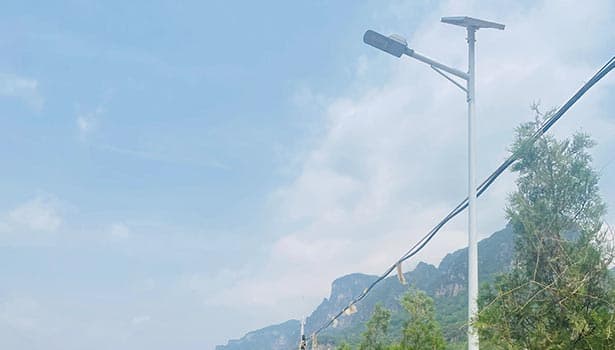
Conclusion
Installing solar street lights is a long-term project. When selecting products, do not blindly pursue low prices or overly prioritize high power. Only solar street lights that meet project requirements offer the best cost-effectiveness. The pricing system for solar street lights reflects a combination of technical parameters, application scenarios, and lifecycle costs. Understanding this system not only helps users make informed procurement decisions but also reveals its deeper value as a sustainable development solution. Through scientific selection, precise calculations, and supplier screening, users can achieve the optimal balance between initial investment and long-term returns, realizing a win-win outcome for both economic and environmental benefits.

